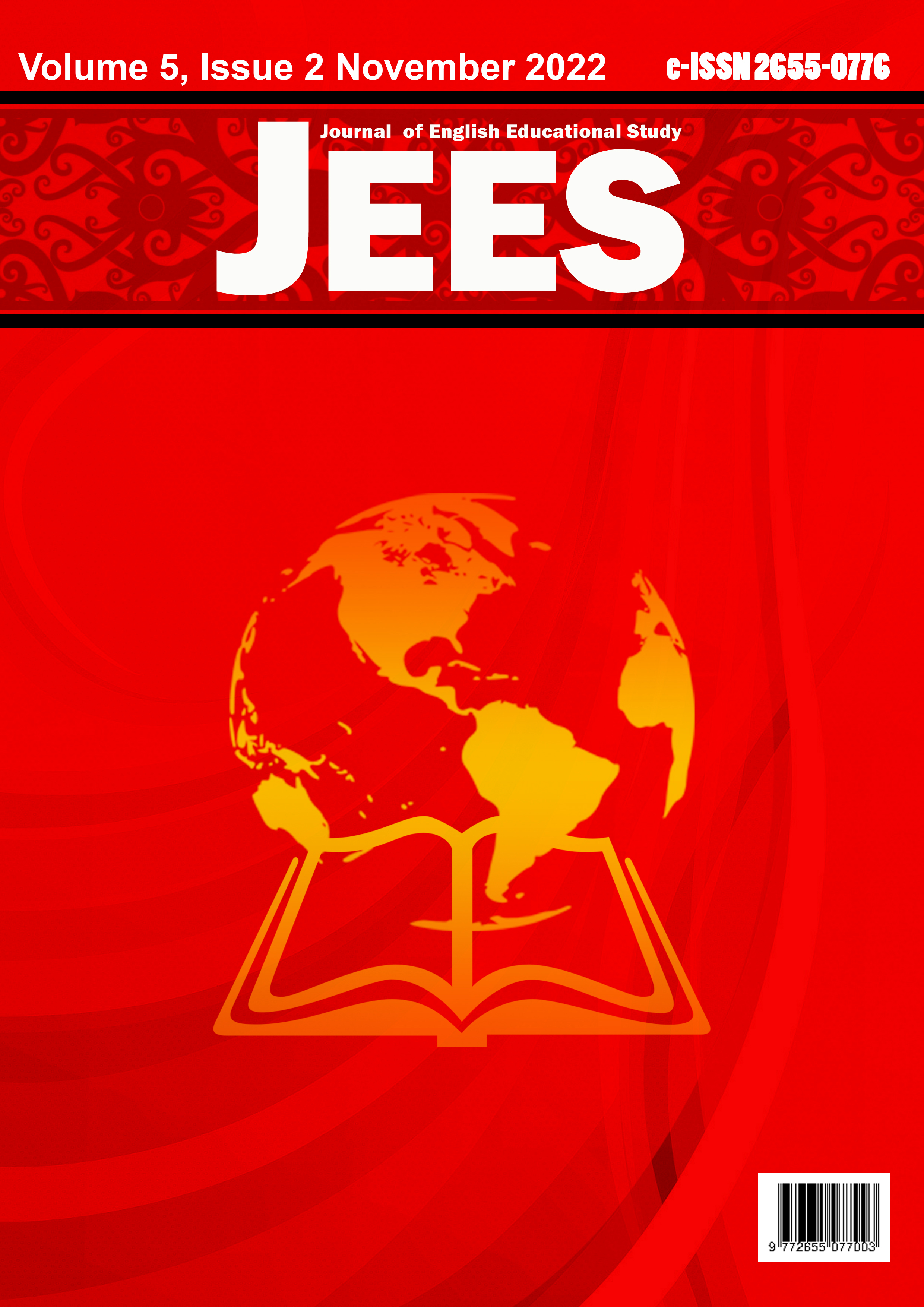TEACHERS’ PERCEPTION OF PEERAGOGY IN ONLINE LEARNING DURING THE COVID-19 PANDEMIC
##plugins.themes.academic_pro.article.main##
Abstract
This covid 19 pandemic has made all life arrangements drastically change, not to mention the world of education, to avoid the increasingly widespread spread of the corona virus, it was changed from face-to-face learning in class to face-to-face or online learning using the zoom or goggle meet application. This research is a digital ethnography research, method or strategy in research to uncover a particular case. The research is oriented to the perception of teachers in learning using peeragogy strategies in online learning during the covid 19 pandemic. Perception is the experience of objects, events, or relationships obtained by inferring information and interpreting messages. Some results found that peeragogy can be applied in online learning because it makes students active, can be very good for honing children's activities in online learning, used to make students bring out latent abilities, and in groups can create a sense of responsibility. However, in online learning, various shortcomings can also be found, such as network problems, students who do not have gadgets and quotas.Â
##plugins.themes.academic_pro.article.details##
References
- Ardévol, E., & Gómez-Cruz, E. (2013). Digital Ethnography and Media Practices. The International Encyclopedia of Media Studies, 7, 498–518. https://doi.org/10.1002/9781444361506.wbiems193
- Barratt, M. J., & Maddox, A. (2016). Active engagement with stigmatised communities through digital ethnography. Qualitative Research, 16(6), 701–719. https://doi.org/10.1177/1468794116648766
- Blaschke, L. M., & Hase, S. (2016). Heutagogy: A Holistic Framework for Creating Twenty-First-Century Self-determined Learner. In The Future of ubiquitous Computing (pp. 25–41). Springer-Verlag Berlin Heidelberg. https://doi.org/10.1007/978-3-662-47724-3
- Chaeruman, U. A., Wibawa, B., & Syahrial, Z. (2020). Development of an instructional system design model as a guideline for lecturers in creating a course using blended learning approach. International Journal of Interactive Mobile Technologies, 14(14), 164–181. https://doi.org/10.3991/ijim.v14i14.14411
- Chan, C. G., Embi, M. A. Bin, & Hashim, H. (2019). Primary School Teachers’ Readiness Towards Heutagogy and Peeragogy. Asian Education Studies, 4(1), 11. https://doi.org/10.20849/aes.v4i1.602
- Corneli, J., Danoff, C. J., Pierce, C., Ricaurte, P., & Macdonald, L. S. (2015). Patterns of Peeragogy Citation. Pattern Languages of Programs Conference 2015, 17(1), 27–43. https://doi.org/10.1080/13645579.2014.854012
- Creswell, J. W. (2009). Research Design Qualitative, Quantitative, and Mixed Metod. In Intercultural Education (Third Edit, Vol. 20, Issue 2). SAGE Publications, Inc. https://doi.org/10.1080/14675980902922143
- Creswell, J. W., & Creswell, J. D. (2018). Research Design Qualitative, Quantitative, and Mixed Methods Approaches. In SAGE Publications, Inc. 2455 (Vol. 44, Issue 8). https://doi.org/10.1088/1751-8113/44/8/085201
- Démuth, A. (2012). Perception Theories. In Applications of Case Study Research (Issue 4). http://issafrica.org/crimehub/uploads/3f62b072bd80ab835470742e71a0fcb5.pdf%5Cnhttp://www.cdc.gov/ViolencePrevention/pdf/SchoolViolence_FactSheet-a.pdf%5Cnwww.sace.org.za
- Dharma, Y. P., Aristo, T. J. V., Sijono, S., & Elisa, H. (2021). English Learning Media Based on Local Wisdom for Teaching Writing Descriptive Text. Journal of English Educational Study (JEES), 4(2), 140–147. https://doi.org/10.31932/jees.v4i2.1327
- Eliastuti, M., Rasyid, Y., & Lustyantie, N. (2020). Digital teaching materials for indonesian scientific writing teaching in college. International Journal of Advanced Science and Technology, 29(5 Special Issue), 1498–1502.
- Etik, E., Lustyantie, N., & Emzir, E. (2020). The Effect of Cooperative Learning and Thinking Ability toward Writing Skill of Exposition Paragraph. SALTeL Journal (Southeast Asia Language Teaching and Learning), 3(2), 22–31. https://doi.org/10.35307/saltel.v3i2.50
- Haghighi, H., Jafarigohar, M., Khoshsima, H., & Vahdany, F. (2019). Impact of flipped classroom on EFL learners’ appropriate use of refusal: achievement, participation, perception. Computer Assisted Language Learning, 32(3), 261–293. https://doi.org/10.1080/09588221.2018.1504083
- Kaurâ€Gill, S., & Dutta, M. J. (2017). Digital Ethnography. The International Encyclopedia of Communication Research Methods, November, 1–10. https://doi.org/10.1002/9781118901731.iecrm0271
- Lolita, Y., Boeriswati, E., & Lustyantie, N. (2020). The Impact of Computer Assisted Language Learning (CALL) Use of English Vocabulary Enhancement. Linguistic, English Education and Art (LEEA) Journal, 4(1), 206–221. https://doi.org/10.31539/leea.v4i1.1896
- Okewole, J. T., & Knokh, I. (2016). Curating to Creating : An open pedagogy for Quality Learning People  Pr oduct People  Pr oduct. Conference Proceedings & Working Papers, 1–6.
- Palmer, C., & Bolderston, A. (2006). A Brief Introduction to Qualitative Research. Canadian Journal of Medical Radiation Technology, 37(1), 16–19. https://doi.org/10.1016/s0820-5930(09)60112-2
- Qiong, O. (2017). A Brief Introduction to Perception. Studies in Literature and Language, 15(4), 18–28. https://doi.org/10.3968/10055

